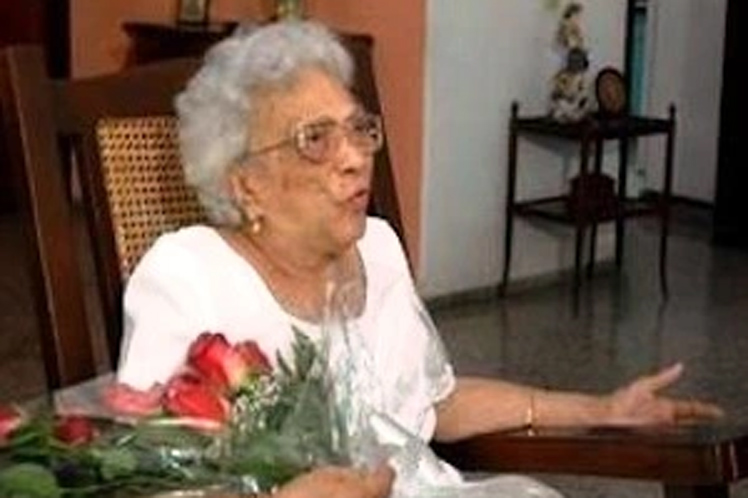Havana, Cuba: Eight years after her death, Cubans today remember the legacy of Melba Hernández, protagonist of the main actions that led to the triumph of the Cuban Revolution in January 1959, Prensa Latina publishes.
She was one of the first members of the revolutionary movement led by the historical leader Fidel Castro with whom she met while studying Law at the University of Havana, she would later follow him to the Moncada, the preparations for the Granma expedition from Mexico and later the insurrectionary struggle in the Sierra Maestra.
Along with Haydée Santamaría, she played a fundamental role in compiling and disseminating Fidel’s defense statement after the assault on the Moncada barracks in 1953, known as History will absolve me.
He participated in the preparations for the Granma expedition and on November 25, 1956 said goodbye to the 82 combatants in the Mexican port of Tuxpan, then returned to Cuba and joined the ranks of the Rebel Army in the Mario Muñoz Monroy Third Front, under the command of Commander Juan Almeida.
At that time, her experience in the revolutionary struggle included the actual assault on Moncada (along with Haydée they were the only two women who participated in the event) and clandestine actions in the cities as a member of the July 26 Movement, whose first National Directorate she would integrate
With the triumph of the Revolution, she held various responsibilities in the development of the solidarity movement and the island’s foreign policy.
She was president of the Cuban Committee of Solidarity with South Vietnam first, and later with Vietnam, Cambodia and Laos; member of the Presidium of the World Peace Council; Secretary General of the Organization of Solidarity with the Peoples of Asia, Africa and Latin America (OSPAAAL).
She was also ambassador of Cuba in the Socialist Republic of Vietnam and in Kampuchea, and director of the Center for Studies on Asia and Oceania.
Melba, as she was known to the people, was also a founder of the Communist Party of Cuba, a member of the Central Committee since her Third Congress and a deputy to the National Assembly of People’s Power until her death.
Surrounded by family, colleagues in the struggle and friends, she died in Havana on March 9, 2014 as a result of complications associated with diabetes mellitus, a disease she suffered from for many years.
Her ashes are found in the Santa Ifigenia cemetery in Santiago de Cuba, in the Mausoleum of the Martyrs of the Revolution, along with her companions who fell in the Moncada deed, where the people will pay tribute assiduously.

